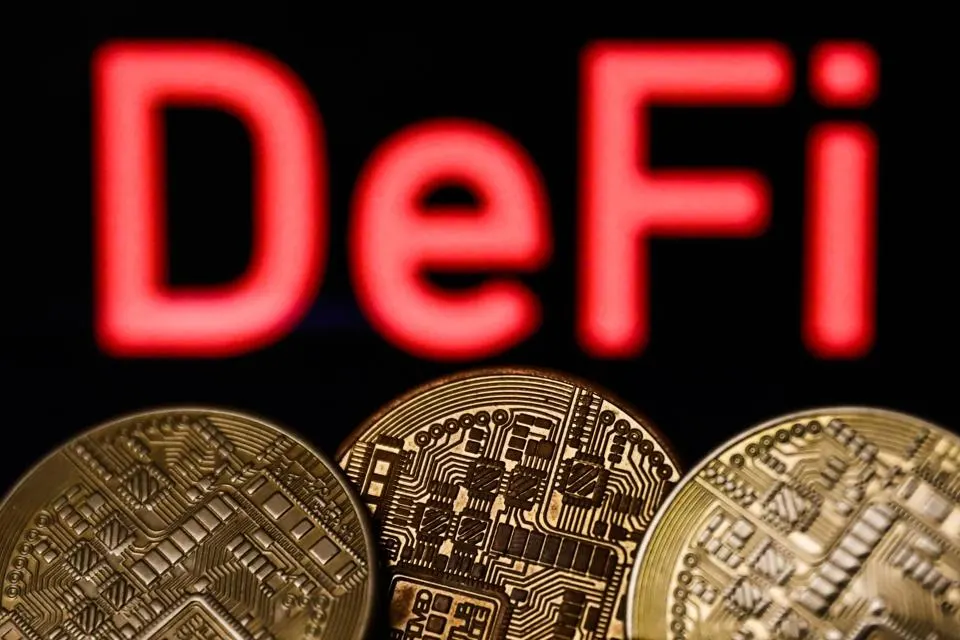By Sean Lee
Compiled by: Vernacular Blockchain

As the crypto market enters a new bull run, the biggest question is whether decentralized finance (DeFi) will take center stage again. Although the DeFi craze in 2020 boosted the entire blockchain ecosystem, this cycle may take a more mature and rational approach, emphasizing practicality and long-term sustainability.
1. Why DeFi is more important than ever
DeFi has transcended its experimental origins to become a cornerstone of blockchain innovation. By leveraging smart contracts and decentralized infrastructure, it provides democratized access to financial services to millions of users around the world.
DeFi is no longer a marginal experiment, but a proven disruptive technology. In 2021, approximately 1.4 billion people in the world do not have bank accounts, and another 1 billion people belong to the underbanked population. DeFi provides a path to financial inclusion, allowing users to bypass traditional financial intermediaries. Today, stablecoins have become the mainstay of the market, while DeFi lending platforms, decentralized exchanges (DEX), and staking protocols have completely changed the way funds flow.
2. The current bull market
To assess the possibility of a DeFi cycle, we need to analyze the current market dynamics. The ongoing bull run has seen Bitcoin and large asset prices rise again, with the total market capitalization exceeding $3 trillion. However, DeFi’s growth does not rely solely on market optimism. Key indicators to watch:
1) Market liquidity The rise in the total locked value (TVL) on DeFi platforms indicates that user confidence is increasing. The latest data shows that TVL has been steadily climbing and now exceeds US$75 billion.
2) Institutional Interest Institutions such as BlackRock and Goldman Sachs are exploring DeFi infrastructure, indicating that the trend of mainstream adoption is taking shape.
3) User Growth Wallet activity in DeFi protocols increased by 30% month-on-month, reflecting the continuous improvement of user engagement.
3. The rise of DeFi innovators
The growth of DeFi’s total locked value (TVL) has spawned a number of new innovative solutions in the market. Among the emerging players shaping the next stage of development, Nudge stands out. The company introduced a new fundamental mechanism in the DeFi ecosystem: programmable incentive payments, called “nudges”.
Nudge's approach, called the "reallocation primitive," represents a shift in how resources are utilized on DeFi platforms. Users earn rewards by reallocating assets, while protocols gain measurable and scalable user acquisition and retention tools. This concept goes beyond traditional token rewards and provides a more targeted and efficient mechanism for ecosystem growth.
Maier added: “Boosting is inspired by the multitude of protocols competing for the same pool of users and capital. By enabling users to profit from reallocating resources, we create new incentives that align their actions with the success of the broader ecosystem.”
Other emerging players include Convex Finance and Tokemak. Convex Finance is built on Curve Finance, increasing yield opportunities for liquidity providers and Curve stakers by simplifying rewards and increasing incentives. On the other hand, Tokemak acts as a decentralized liquidity provider, optimizing capital deployment across the ecosystem through its unique liquidity reactor.
While retail-focused DeFi solutions such as Nudge aim to make financial tools more accessible to individual users, there is another category of DeFi applications that focus on institutional utilities, bridging the gap between traditional finance and decentralized systems. For example, Singapore's Project Guardian is exploring institutional DeFi by experimenting with tokenized bonds and deposits to assess the potential of decentralized financial infrastructure. With the support of the Monetary Authority of Singapore (MAS), it aims to combine tokenized assets with licensed liquidity pools to provide a secure and scalable blueprint for institutional adoption.
4. The role of supervision
One of the key factors that will impact the future of DeFi is regulation. As governments around the world grapple with the challenges of regulating decentralized systems, the impact of new policies on DeFi cannot be underestimated. Regulatory clarity could either propel DeFi into the mainstream or inhibit its growth.
Recent developments show that the industry has a mixed bag. The EU’s Markets in Crypto-Assets (MiCA) regulation aims to create a comprehensive framework for crypto assets, including DeFi protocols. While this provides a path to legalization, critics argue that overly strict requirements could hinder innovation.
In the United States, the Securities and Exchange Commission (SEC) has stepped up its scrutiny of DeFi platforms, emphasizing the need to comply with existing securities laws. This has prompted many projects to consider adopting a decentralized autonomous organization (DAO) structure to deal with regulatory hurdles. "While regulation is necessary, a balance must be maintained to promote innovation," Maier said.
For a deeper dive into regulatory considerations, I recommend reading Key Elements of an Effective DeFi Framework, published by the Crypto Innovation Council, which I co-authored. Here, we outline principles for developing policies that encourage innovation while ensuring consumer protection and financial stability.
5. What can drive this DeFi cycle?
In this bull run, several factors could reignite the DeFi cycle:
1) Institutional interest: As traditional financial institutions explore blockchain technology, DeFi can serve as a bridge between centralized and decentralized systems.
2) Layer 2 Scaling Solutions: Emerging players in the space are making DeFi more accessible and cost-effective, potentially driving user adoption.
3) Tokenization of real-world assets: Integrating real-world assets into DeFi platforms can attract a wider audience and improve practicality.
“The next DeFi cycle will prioritize utility over hype,” Maier added.
6. Conclusion
While regulatory and market sentiment uncertainty remains, DeFi fundamentals remain strong. With innovative platforms such as Nudge leading the way and continued advancements in blockchain technology, DeFi is poised to recover in this bull run. The next few months will be critical in determining whether DeFi can overcome challenges and reclaim its position as a driving force in the crypto ecosystem.













